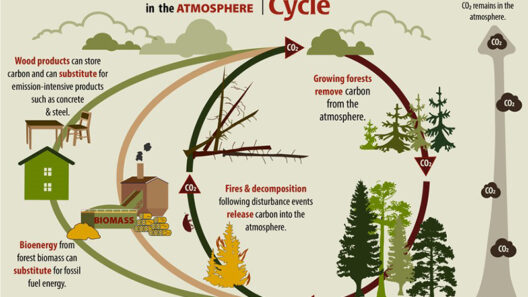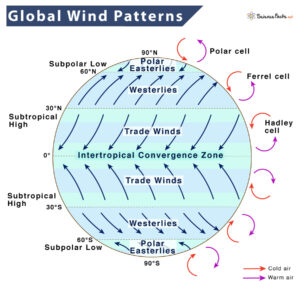Welcome to the world of arid climates, where the undulating dunes stretch like a golden sea, whispering secrets of resilience and adaptation. In this stark yet captivating environment, life endures against all odds. To truly understand what an arid climate is, one must delve deeper into its characteristics, the flora and fauna that have ingeniously adapted, and the remarkable cultural narrative woven throughout human history within these parched landscapes.
An arid climate is characterized predominantly by its low precipitation levels, often receiving less than 10 inches (25 centimeters) of rainfall annually. The sheer scarcity of water transforms vast expanses into arid landscapes, including deserts, savannas, and semi-arid regions. Parched earth and sparse vegetation paint a picture that can be both mesmerizing and intimidating. The air is often thick with the palpable weight of heat, and at times, an almost tangible silence envelops the surroundings—a quietness punctuated only by the soft rustling of wind dancing over dunes.
The beauty of arid climates lies not solely in their harshness but in the resilience of the life forms that thrive here. Vegetation in such regions has adapted in remarkable ways, morphing into resilient beings that embody survival. The iconic cacti, with their prickly spines and water-storing capabilities, stand as sentinels against the sun’s relentless glare. These plants have ingeniously evolved to minimize moisture loss through specialized structures known as CAM (Crassulacean Acid Metabolism) photosynthesis. Where other plants might wilt, cacti flourish—transforming the harsh sunlight into sustenance, almost as if they are alchemists conjuring life from dryness.
Yet, flora is but one facet of this arid tapestry. The fauna that inhabit these tenacious terrains exhibit adaptations that seem to defy the odds. Creatures such as the fennec fox, with its oversized ears, are perfectly suited to survive the intensity of desert life. Those ears function not only to hear prey but also to dissipate heat. Similarly, the jewel-toned horned toad—often a master of disguise against the sun-baked sands—exhibits an impressive ability to camouflage into its surroundings, evading the ever-watchful eyes of predators. Every animal, from the diminutive insects burrowing underground to the majestic camels traversing vast distances, embodies survival strategies that reflect the challenges presented by the unforgiving climate.
This interaction of life and environment creates a unique microcosm where struggle and beauty coexist harmoniously. The vast, empty expanses may seem inhospitable, yet they resonate with an enigmatic allure that draws adventurers and dreamers alike. Artists and writers have often romanticized arid landscapes, likening them to the ‘skin of the earth.’ Such metaphors invoke a sense of vulnerability and strength, portraying the desert as a place of introspection, spirituality, and personal growth.
It is also within these arid regions that human culture has flourished against formidable odds. Civilizations, such as the ancient Nabateans, thrived in the arid expanses of Petra, building intricate structures that still stand as testaments to human ingenuity. Their existence relied on an acute understanding of the environment—mastering the art of harvesting water through innovative cisterns and cultivating crops in the harshest of climates. Such communities illustrate the remarkable adaptability inherent in human societies faced with the relentless challenges of aridity.
Moreover, the cultural narratives that arise from arid regions are rich and diverse. Indigenous peoples have long understood the rhythm of the land and its seasons, developing symbiotic relationships with their environment. Storytelling often draws upon the unique geography—stories of spirits living within the earth and sky, of ancestors who roamed the expansive sands, and lessons of survival passed down through generations. These tales become a vital means of education, preserving knowledge and wisdom necessary for thriving in an arid climate.
Despite its unique allure, the challenges posed by an arid climate are immense and growing. Climate change, with its rising temperatures and shifting weather patterns, poses additional threats to these fragile ecosystems. Water scarcity is becoming more pronounced, endangering both wildlife and human communities that rely upon consistent moisture. The interplay of drought and climate extremes results in a precarious balance that could tilt toward significant ecological upheaval. This influx of unpredictability necessitates a proactive approach to conservation, urging societies to innovate sustainable practices that honor both the land and its inhabitants.
In summary, surviving the sands of an arid climate offers an intricate portrait of resilience, adaptation, and cultural richness. It reveals a world where life not only exists but thrives in the face of adversity. This dichotomy of hardship and vibrancy invites empathy and respect, urging humanity to appreciate the profound beauty that emerges from conditions seemingly unkind. Understanding arid climates allows us not only to recognize the intricacies of life in these landscapes but also to engage more thoughtfully with the pressing environmental challenges they face today. Whether through education, collaboration, or conservation, the story of arid regions is one worth preserving—a narrative interwoven with the very essence of survival and an enduring quest for balance in a world relentlessly shaped by nature.




